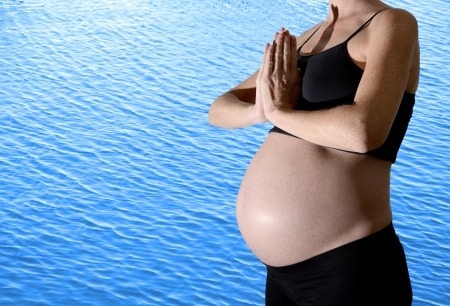Many natural soothing methods are available during labour. Relaxation, which is a natural human ability, is defined as a general state with a feeling of physical and mental well-being. Many alternative approaches target this well-being, and you can choose the one that meets your needs and desires. The analgesic response to different approaches varies but provides relaxation and better self-control. When preparing for childbirth, you have to be open to different opportunities that can help you during delivery.
Visualisation, hot baths, yoga, meditation, massages, acupuncture, haptonomy, the Bonapace method, hypnosis, changing positions, different types of pillows, support bar, a magic bag, birthing chair, rocking chairs, TENS, sterile water injections…as you can see, many things can help without having to use medication.
In this article, we will talk about visualisation, meditation and hypnosis.
First, let’s talk about visualisation. It involves concentrating on detailed mental images that have a calming effect. For example, during labour, you can visualise your contraction as a wave, or a mountain with a trail leading to the summit, then descending back to the base. You can imagine the wave growing then quickly crashing to control the pain caused by the contraction. Other images can be beneficial too.
You can’t force relaxation; it has to occur progressively. This body approach allows you to give birth through your body, not in your mind.
Take each contraction, each wave, one at a time. It’s also helpful to breathe at the same time. Visualisation sessions can last from 20 to 30 minutes and repeat throughout labour.
Meditation increases your power to concentrate, especially on breathing, to better control your thoughts. For example, closing your eyes and concentrating on relaxing your tense muscles one at a time allows you to focus on relaxation rather than tension. In short, you can’t force relaxation; it has to occur progressively. This body approach enables you to give birth through your body, not in your mind. It’s very important that your prenatal learning promotes this approach, even during pregnancy.
People that use meditation often use a specific posture to concentrate and have an open mind. Many types of meditation, for example, Buddhist meditation, exist, but they all share many characteristics, including the importance of a quiet space to meditate, a comfortable posture (for the mother), concentrating on a mantra, breathing, and an open mind.
Relaxing music can accompany this self-concentration and stimulate pleasure centres. Soft music chosen by the mother can help stabilise her breathing and promote relaxation, lowering her heart and respiratory rates. Giving birth means that the mother has to let go in the present moment, find the instincts that will guide her to childbirth.
Hypnosis is a technique that leads one to a modified state of consciousness. This method doesn’t eliminate pain but helps the mother deal with it. First, the future mother has to have been exposed and responded to this approach, which isn’t always the case for everyone.
If you want to use this type of approach for relaxation during labour, you have to advise your caregiver during pregnancy visits to understand the role of everyone the day labour starts. You should use the services of a specialist for this approach. Ask your health professional for a list of resources in your region.
In conclusion, we want to say a few words about sophrology. This technique, which is similar to hypnosis, uses mental and breathing exercises to better connect with the baby. While not widely used in Canada, sophrology is very popular in some countries.
Now that you have more information about different natural soothing methods, we suggest you do your own research and choose ones that seem best for you.
Related articles:
Related videos:
- Natural and Alternative Methods to Soothe Pain
- Naturopathy, Pregnancy and Baby
- Childbirth in a Birthing Home
- Natural Childbirth in a Hospital Setting
- The Bonapace Method
- Massage pour la femme enceinte (in French)
Marie Fortier
The Baby Expert


